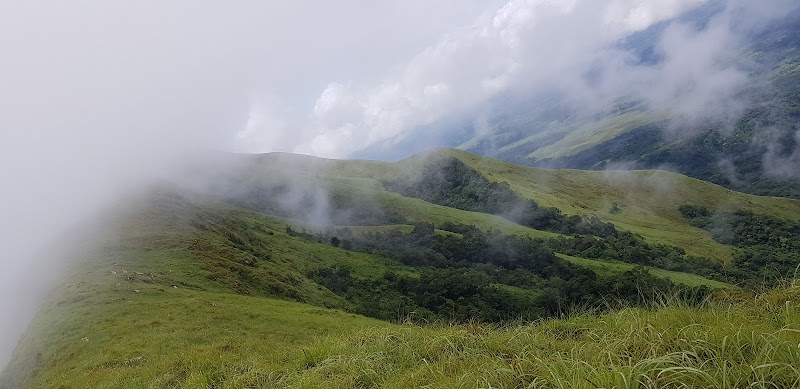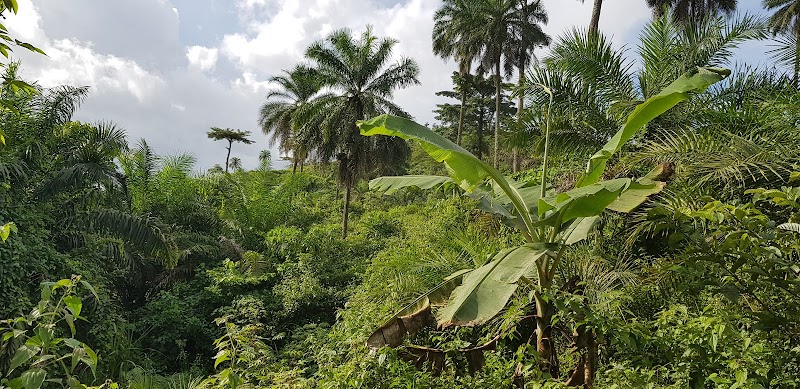
Mount Richard-Molard: Nature's Masterpiece
Mount Richard-Molard: Nature's Masterpiece
Category
Hiking
Typical Duration
2-4 hours
Difficulty
Hard
Photo Gallery

Mount Richard-Molard: Nature's Masterpiece - Mount Richard-Molard

Mount Richard-Molard: Nature's Masterpiece - Mount Richard-Molard

Mount Richard-Molard: Nature's Masterpiece - Mount Richard-Molard
About This Landmark
Mount Richard-Molard: West Africa’s Highest Peak
Mount Richard-Molard, also known as Mount Nimba, rises majestically on the border between Guinea and Ivory Coast within West Africa's Nimba Range. This mountain is remarkable as the highest point in the region, reaching an elevation of 1,752 meters (5,748 feet). Its steep, green slopes are covered by dense forest that gradually shifts to rare alpine grasslands near the summit. The landmark stands out as a critical spot of natural importance due to its unique combination of geological formations and rich biodiversity.
The area surrounding Mount Richard-Molard has been designated a UNESCO World Heritage Site, honoring its diverse and often exclusive plant and animal species. Among its distinctive wildlife are the Nimba viviparous toad, which gives birth to live young rather than laying eggs, and the elusive Western Nimba chimpanzee, found only in this region. The mountain’s varied ecosystems create a remarkable habitat that supports several endemic species, making it an important site for biological research as well as nature appreciation.
Visitors are drawn by the mountain’s dramatic elevation changes and panoramic views over the bordering countries. The ascent involves walking through dense, moist tropical forest, crossing slippery terrain, and eventually reaching exposed rocky sections near the peak. Nearby villages and research centers sometimes welcome guests, providing guided treks and cultural insights into local life. Mount Richard-Molard has a strong presence in local culture and history, reflecting the deep connection people have with this towering landmark in West Africa’s natural landscape.
Adventure Guide to Mount Richard-Molard
1. Hiking the Summit
- What Makes It Special: Climbing to the peak offers sweeping views of Guinea and Ivory Coast’s countryside and the chance to pass through different ecological zones.
- Key Features: Dense green forests, misty mountain air, and rare species sightings.
- Visitor Tips: Best visited during the dry season (November to February) to avoid heavy rains and slippery trails. Hikes require a local guide—arrangements can be made in nearby Bossou. Bring water, sturdy hiking boots, and insect repellent.
2. Wildlife Watching
- What Makes It Special: Unique opportunity to observe endemic species like the Western Nimba chimpanzee and Nimba viviparous toad in their natural habitat.
- Key Features: Birdwatching hotspots, rare amphibians, and primates.
- Local Insights: The mountain forms part of a protected reserve, so visitors should respect all conservation regulations and avoid disturbing wildlife.
- Visitor Tips: Binoculars and cameras are highly recommended. Maintain silence and keep a safe distance from animals.
3. Cultural and Ecotourism Experiences
- What Makes It Special: Engage with local communities near the mountain for authentic cultural exchanges and support sustainable tourism.
- Key Features: Guided treks with local experts, visits to research stations, and traditional village hospitality.
- Visitor Tips: Learning simple phrases in French or local languages enriches communication. Plan your stay near Bossou, the usual base for mountaineers.
Getting There & Practical Advice
- Directions: From Conakry (Guinea’s capital), it’s approximately a 6-hour drive to Bossou. From Yamoussoukro (Ivory Coast), travel times are longer with less frequent roads. Use a 4x4 vehicle for rough terrain near the mountain.
- Best Time to Visit: November to February (dry season).
- What to Bring: Hiking boots, rain gear, water, insect repellent, sunscreen, camera, and a basic first aid kit.
- Local Insight: Weather changes quickly at high altitude. Start early in the day to avoid afternoon rains or fog.
- Best Times: November to February for cooler temperatures and amazing lighting.
- What to Bring: Water, sunscreen, and a camera!
Ratings
Overall
Photography
Featured Activities
Primary Activity
Hiking
Also Great For
Essential Information
Nearby City
Protected Areas
Nimba Mountains Strict Nature Reserve
Experience Level
Experience Needed: This natural landmark is recommended for those with significant outdoor experience. Best for experienced adventurers.
